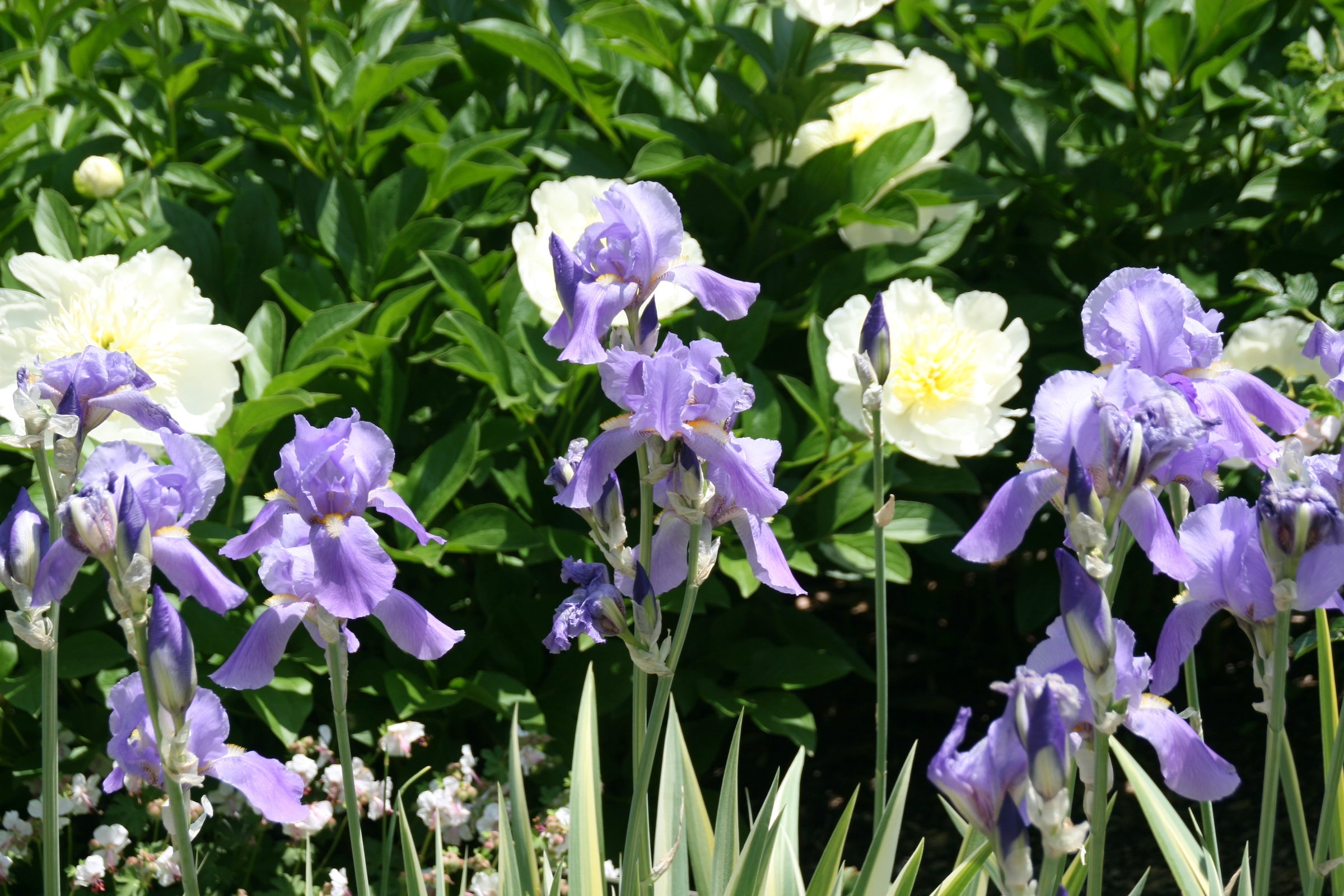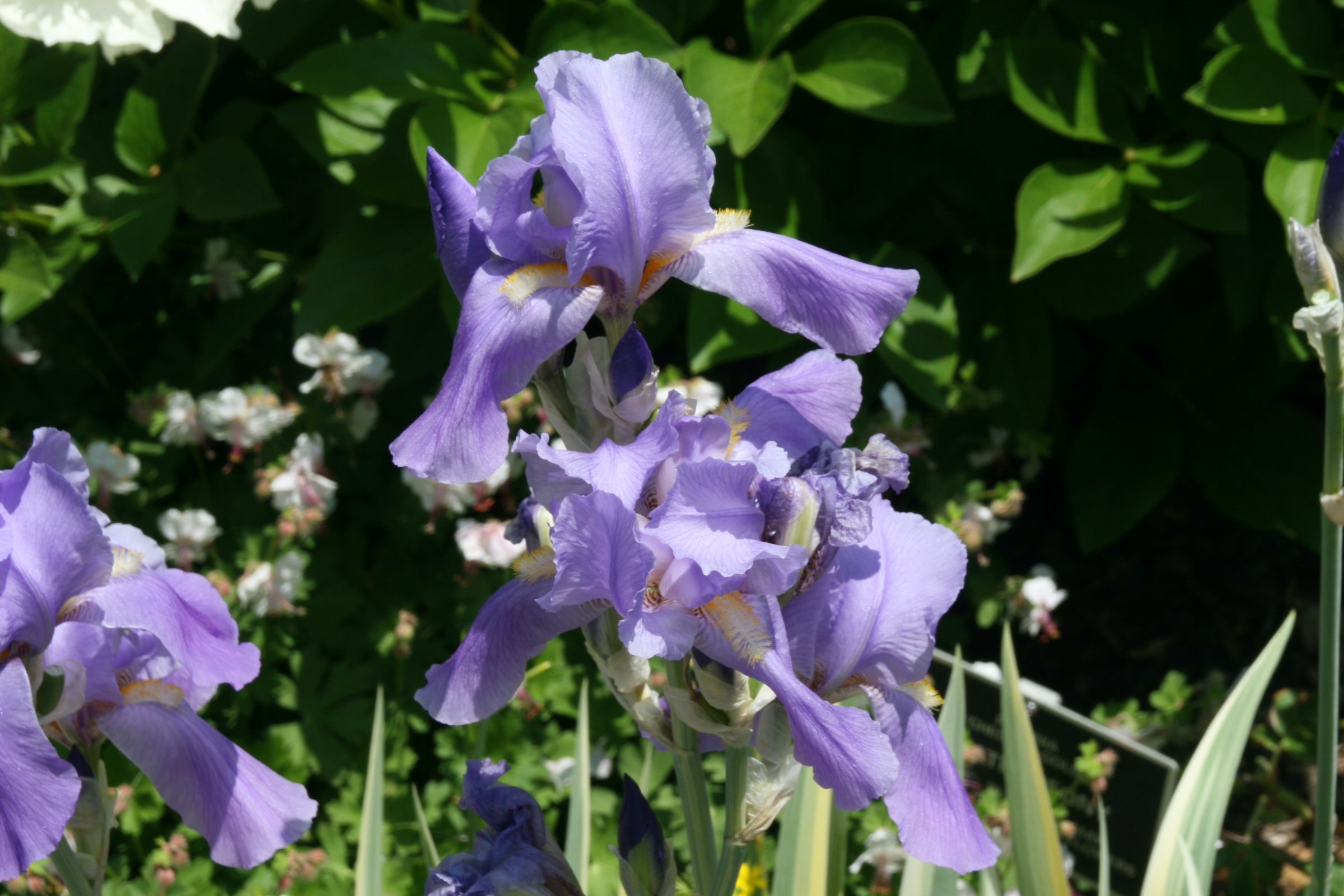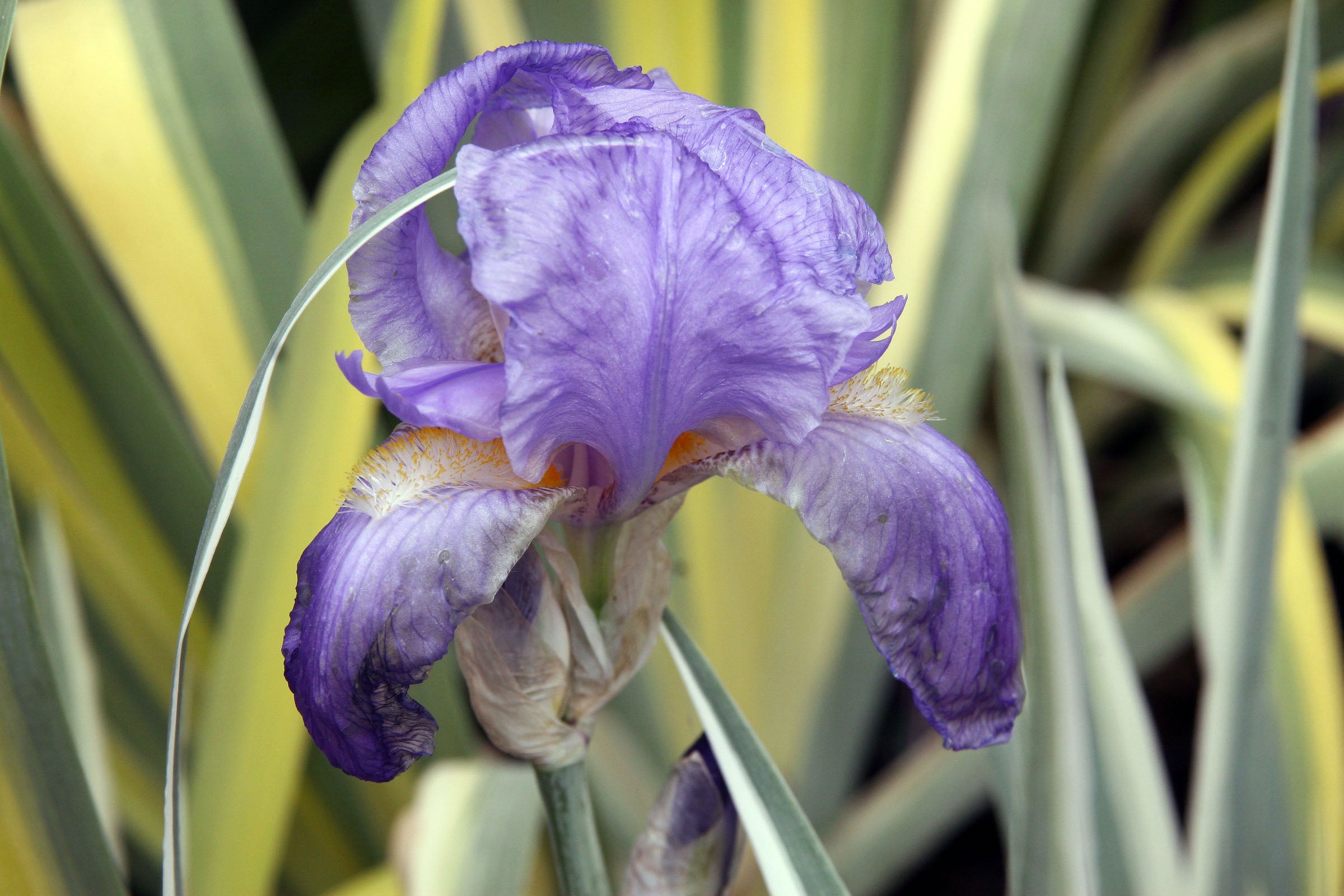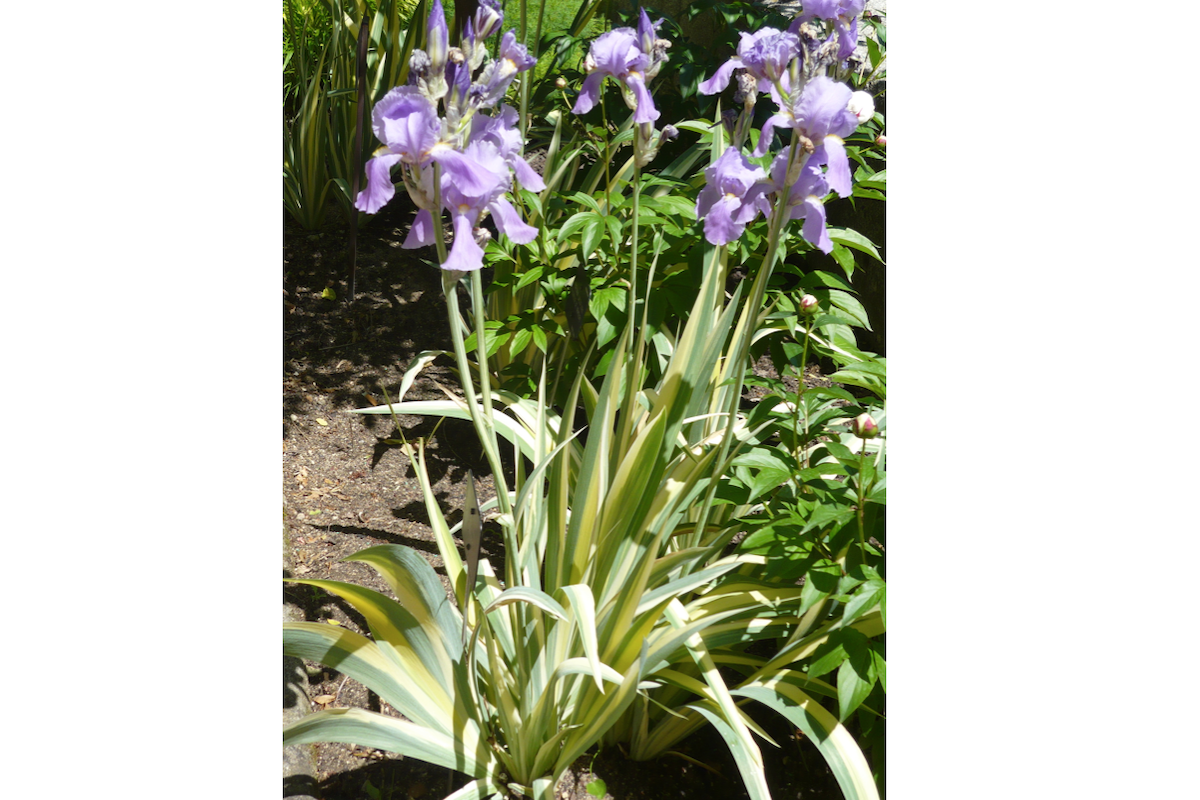Iris pallida Lam. 'Variegata' Hort. (v)
Approx. 0.5 litre pot
About this cultivar:
Iris pallida Lam. 'Variegata' Hort. (v) is the variegated type of Iris pallida subsp. pallida. Has the Royal Horticultural Society Award of Garden Merit.
Iris pallida subsp. pallida is what the RHS call Iris pallida now. What about Iris pallida? It is native to Croatia, but naturalised in many other parts of the world. We don't grow it because it prefers dryer soils than what we have. However, people always ask for it. Why? Because they see it on holidays? Because in the right soil it is tough, vigorous, and semi-evergreen (almost evergreen). Good in rocky areas.
- Position: Full sun, partial shade
- Soil: Almost any soil, but not wet
- Flowers: May, June
- Other features: Royal Horticultural Society Award of Garden Merit (RHS AGM), Cut Flowers or Dried Flowers
- Hardiness: H7 - Hardy in the severest European continental climates (< -20°C), Fully hardy
- Habit: Clump forming
- Foliage: Semi evergreen
- Height: 60 - 90 cm (2 - 3 ft)
- Spread: 60 - 90 cm (2 - 3 ft)
- Time to full growth: 2 to 5 years
- Plant type: Herbaceous Perennial
- Colour: Green, blue, purple, white
- Goes well with: Hosta, Hemerocallis, Geranium
About this genus:
Iris (i-ris) is a genus of 260–300 species of flowering plants with showy flowers. It takes its name from the Greek word for rainbow, referring to the wide variety of flower colours found among the many species. As well as being the scientific name, Iris is also used as a common name. Long in cultivation there seem to be as many cultivars as plants. Culturally the genus has had quite an impact. The fleur-de-lis, a stylized Iris, first occurs in its modern use as the emblem of the House of Capet (rulers of France 987 to 1328). It is also the universal symbol for Scouting. Many artists have a 'thing' with Iris, not least Van Gogh- who was a fan of Iris (not just sunflowers).... see images opposite!
As a group, Iris species can range from drought-tolerant dry land perennials to bog dwellers and from sun to shade, so there is no set of cultivation rules for the genus as a whole. In general though the cultivars we have in our garden (and sell), are tough, low maintenance plants perfect for wet gardens and similar sites.
Try pairing irises in the garden with Hosta, Hemerocallis, Geranium. They also look great as a cut-flower; the reason you don't get them in florists is that they don't transport well.










